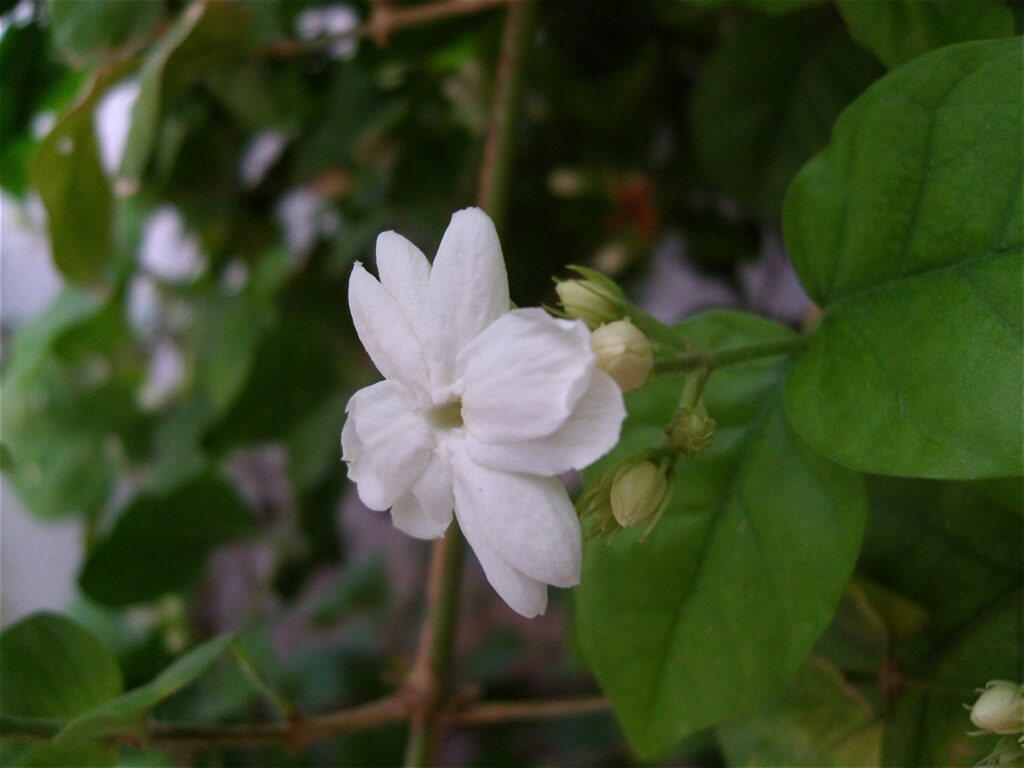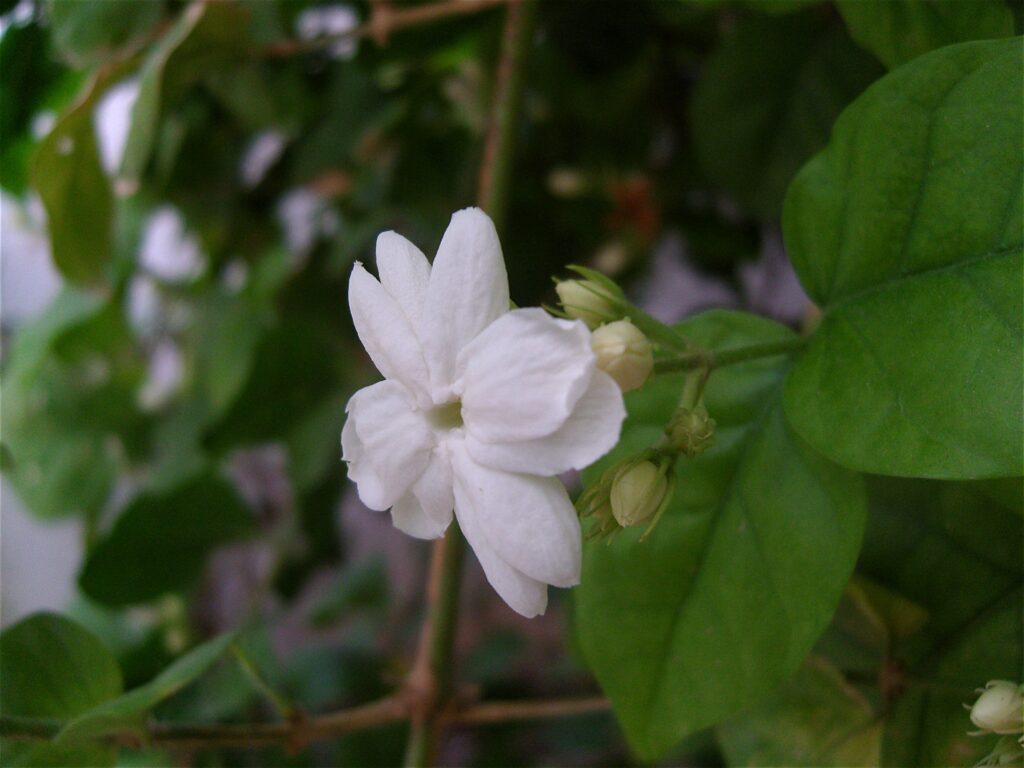Tunisia
Jasmine
Jasminum

General Description / Cultural Significance
As the national flower of Tunisia, jasmine (Jasminum) symbolizes simplicity, serenity, purity, and happiness. For thousands of years, Tunisians have cultivated jasmine for personal enjoyment, cultural expression, and as a token of love and wellness. The most commonly grown variety in Tunisia is Arabian Jasmine, also known as Jasmine Sambac. This climbing evergreen shrub can reach heights of up to 10 feet. It features oval-shaped leaves and pale white, pink, and purple petals, known for their sweet, tropical fragrance. Jasmine thrives in full sun and well-drained, moist loamy soil, with its floral clusters blooming year-round.
Since 2010, jasmine has become synonymous with Tunisia due to the Jasmine Revolution—a pro-democracy uprising against government corruption, poverty, and political repression, including the unlawful seizure of vendors’ wares such as jasmine. This movement inspired similar protests in other jasmine-growing countries across North Africa and the Middle East.
In July, the capital city of Tunis hosts the Jasmine Festival to commemorate the revolution, honor the national flower’s significance in traditional ceremonies, and celebrate its natural beauty and fragrance. During the festival, locals adorn themselves with jasmine garlands, symbolizing purity, fertility, and good luck. Jasmine-scented products, such as teas, soaps, and oils, are sold at market stands. When Tunisians travel abroad, they often bring jasmine essential oil, their “perfume of home,” for comfort.
Climate Change / Conservation Status
Water scarcity in Tunisia has increasingly become a critical issue for both officials and citizens. The World Bank predicts that by 2030, Northern African countries like Tunisia will fall below the “absolute water scarcity” threshold, indicating a dramatic decline in agricultural productivity.
Tunisia, one of the hottest places on earth and the 33rd most water-stressed country worldwide, faces significant challenges in cultivating crops like jasmine, which thrives in moderate temperatures. The extreme summer heat makes it difficult for jasmine to grow, and imminent dry spells further exacerbate the problem. As a result, cultivating jasmine in large quantities is becoming increasingly difficult. Farmers may have to resort to growing jasmine in smaller quantities, which requires less water and soil management but will make jasmine significantly less available.
Alternate Names
Sambac
Jessamine
Sources
Carvin, Andy. “Sidi Bou Zid: A Jasmine Revolution in Tunisia (with Images) · Acarvin.” Storify, web.archive.org/web/20131211214152/storify.com/acarvin/sidi-bou-zid-a-jasmine-revolution-in-tunisia. Accessed 7 May 2024.
“Jasmine Care: How to Plant, Grow, and Care for Jasmine Flowers | Gilmour.” Growing and Caring for Fragrant Jasmine Flowers, Gilmour, gilmour.com/jasmine-care. Accessed 7 May 2024.
“Jasmine : Tunisia’s Floral Emblem.” KAWA, Kawa News, 4 July 2023, kawa-news.com/en/jasmine-tunisias-floral-emblem/.
Permanent Mission of Tunisia to the United Nations. Full statement on World Sensorium original website.


